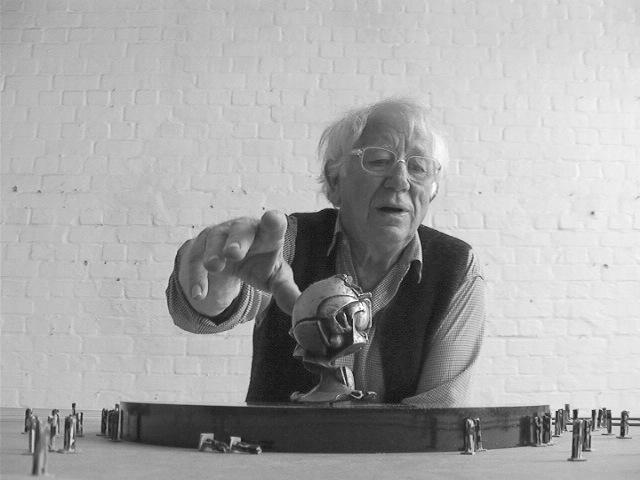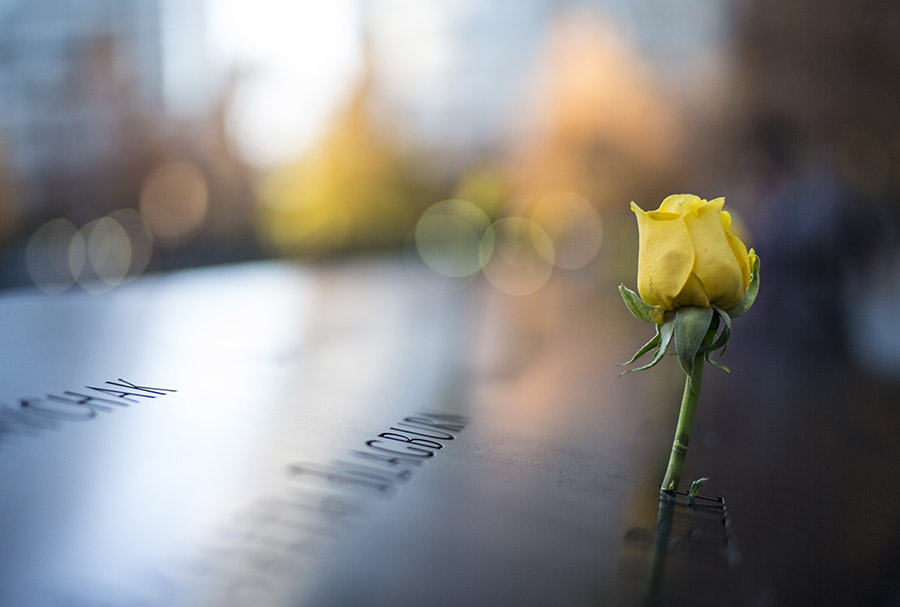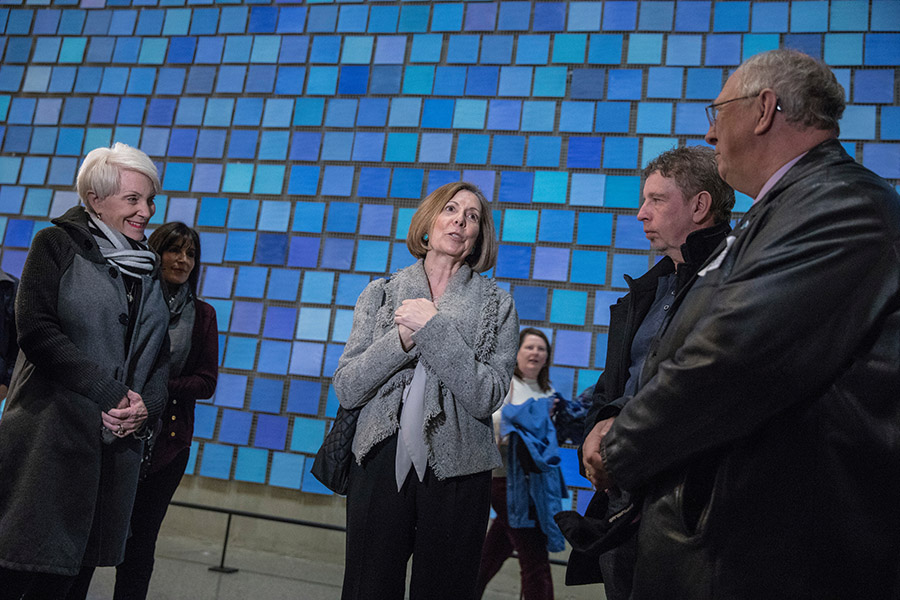Make a donation to the museum
Remembering Fritz Koenig, the Sculptor Who Created the World Trade Center's Iconic Sphere
Remembering Fritz Koenig, the Sculptor Who Created the World Trade Center's Iconic Sphere

The recent death of artist Fritz Koenig (1924-2017) has generated many posthumous tributes. Mine flows from a memorable visit with the artist at his home and studio in the farming community of Ganslberg, 38 miles northeast of Munich.
Outside his native Germany Koenig is probably best known as the sculptor of the iconic “Sphere” that centered the World Trade Center plaza until it was covered under wreckage from the collapsed Twin Towers on Sept. 11, 2001.
Referred to by its creator as Die Kugelkaryatide, the 25-ton metallic composition was conceived as a stylized caryatid, a sculpted female figure used as an architectural support, emerging from a circular low-rise fountain. Directly commissioned for the outdoor plaza by the Port Authority of New York & New Jersey, the artwork was intended to complement architect Minuro Yamasaki’s vision of the World Trade Center as an engine for promoting global peace. Koenig later spurned the saddling of this aspirational reading onto his sculpture. Instead he suggested that it conveyed the no-less freighted idea of humankind’s responsibility for the fate of the modern world.
In the grim weeks after 9/11, Koenig – then in his late 70s – ventured to New York hoping to locate the Sphere, or what remained of it. That mission contributed to its salvaging and repurposing as an interim memorial to the victims and survivors of 9/11. On the six-month anniversary of the attacks, Koenig was present when the battered but recognizable Sphere was dedicated in Battery Park. Regrettably, he will not be here to witness its relocation to the new Liberty Park overlooking the sculpture’s original home.
In preparation for telling the story of Koenig’s Sphere in the 9/11 Memorial Museum, I traveled to Germany in July 2008 to tape an oral history with Koenig and discuss how we might represent this signature creation in our emerging historical exhibition. Michael Shulan, our creative director at the time, joined me. As the expedition neared, it dawned on us that we might encounter challenges on top of taking the right Autobahn exit and then finding the unmarked road winding up to Koenig’s retreat. For starters, the artist spoke limited English; our Bavarian German was nonexistent. Fortunately, to the rescue came Alexander Rudigier, a multilingual gallerist long acquainted with Koenig, who volunteered his services as translator and navigator.
Vivid impressions still color our visit, starting with the outcroppings of statuary that heralded our approach into Koenig’s hillside property. Grazing on the slopes rising around the driveway were several white Arabian horses – the passion of the artist’s wife, Maria, we learned. After parking in a sunny courtyard filled with lounging barn cats we were greeted by Fritz – who insisted on this familiarity. He ushered us through a maze of distinctively decorated rooms that led to his studio, cluttered with drawings, maquettes and modeling tools. Here, we conducted our long, triangular interview followed by a tour of the library showcasing his impressive collection of African art. Freshly baked streusel and strong coffee, emerging from an offstage kitchen, were devoured in a comfortable parlor. Our itinerary was capped with an exploration of the large outbuilding adapted, forty years earlier, for the fabrication and progressive enlargement of the Sphere. On a turntable stood a memento of that methodical process: that artist’s 1:12 scale bronze working model for the piece.
It was revealing to watch Koenig during our recording sessions. He grew ever more animated while recounting the circumstances of his award of the World Trade Center commission in the 1960s, and the intentional secrecy that shrouded the artwork until its unveiling in lower Manhattan. Clearly, he had reveled in these covert operations and took pride in the bold outcome delivered to his American clients. When questions shifted to the Sphere’s fate on September 11, his voice quickly faltered; his face turned grave. No interpretation was required for his emotional use of “kerput.” But here, he also labored to find his English words. Though seven years and a continent removed from that Tuesday morning’s horror, his heartache was still fresh. He wished to express his condolences for the human loss we all suffered on 9/11. Each life mattered, and was irrecoverable. The purpose of his intervention at Ground Zero wasn’t to safeguard his own personal legacy. His intent was to lessen public sorrow by reclaiming something affirmative out of mass destruction; something demonstrative of society’s inherent strength and capacity to survive the traumas inflicted on it.
As host, Fritz Koenig made sure that his company left fuller than leaner. Michael and I departed his hilltop home carrying a pocket-sized facsimile of the Sphere the artist had brought to New York in autumn 2001 and his promised donation of the original 1:12 model. The latter is now prominently displayed on the Museum’s Concourse Level, where it helps to introduce visitors from around the world to the geographic authenticity of place they have entered.
By Jan Seidler Ramirez, Chief Curator
Previous Post
The Lens: Capturing Life and Events at the 9/11 Memorial and Museum

The Lens: Capturing Life and Events at the 9/11 Memorial and Museum is a photography series devoted to documenting moments big and small that unfold at the 9/11 Memorial and Museum.
Next Post
Canadian Townspeople Celebrated in New Broadway Musical Visit 9/11 Museum

When U.S. airspace was closed following the 9/11 attacks, flights carrying more than 6,500 international travelers were diverted to the small town of Gander, Newfoundland, nearly doubling the population of the town within hours.